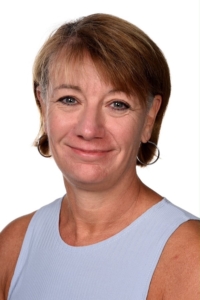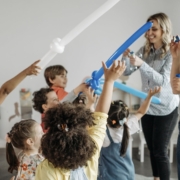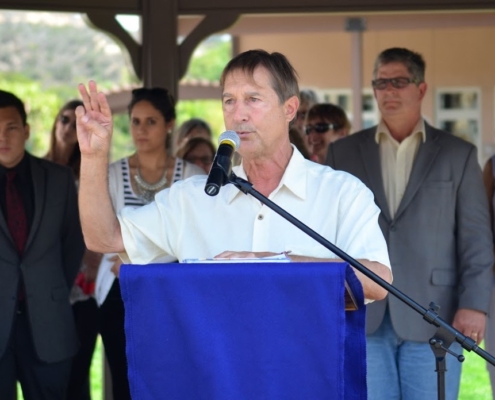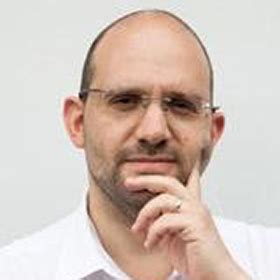Creating Impact through Collaboration
Creating Impact through Collaboration
Anja Junginger, MYP Design Teacher / Strategic Development Manager, International School of Stuttgart
Defining and building a culture of inclusive high-impact learning has long been a strategic priority for us at the International School of Stuttgart. As with any ambitious and ongoing change process, we have had to clarify our thinking around our s of success, aligned with our guiding statements, and our theories of action for achieving this success. At the heart of our work is the importance of inclusion and learner-agency. Our challenge has been to create the right structures that will positively transform patterns of behaviour and attitudes to amplify our values. This change, we hope, will in turn allow for all learners to be participants in creating a space that enables a visible, collaborative, self-directed learning culture where all can grow, and are seen and heard in the process.
The Program
There are many ways to achieve these aims, however one that we are implementing and evaluating this year is the ISS Teacher Residency Program. The program aims to provide an opportunity for aspiring educators, our Residents, to grow and develop as IB teachers within a collaborative experience dedicated to their professional growth and evidenced through student learning. Experienced Mentor Teachers support this development not only as guides and coaches, but also as learners themselves. This is aligned with our developing strategic approach to professional learning and building a ‘Coaching Culture’. The program is rooted in the principles of adult learning, the IB Standards and Practices, and the NEASC ACE Learning Principles for all learners, as well as guided by the Learning Forward Standards for Professional Learning.
The Program is intended to inspire, support, and challenge both a diverse group of young professionals advancing on their career path, as well as the ISS Mentor Teachers who collaborate with them. Our hope is that by enacting this learner-centered and job-embedded form of professional learning that we can lay the seeds for a culture of collaboration and self-directed learning for all learners at ISS. The program currently supports eight Residents, eight Mentor Teachers, and two coordinators. Our aim is that these 18 educators will begin to create patterns of motivation and energy, clarity of purpose, and growth mindsets inspired by action research within their teams. This will ideally create an amplifying feedback loop.
Our Findings
Although only six months into the program, we have gathered evaluative feedback so that we can iterate improvements into the 2023-24 structure . We used several evaluation methods including surveys, collaborative brainstorming, and Focus Group sessions with the Residents, their mentor teachers, and school leaders. First, we wanted to find out if our success criteria were being met, for which we used the survey, asking participants to rate their agreement with the success criteria statements.
- Residents express satisfaction with the ways in which they are treated and included as members of the ISS community:
Average rating 4.4 out of 5 - Residents can incorporate their prior knowledge into the program to aid and extend their learning:
Average rating 4.6 out of 5 - Residents have opportunity to collaborate based on their strengths and abilities:
Average rating 4.6 out of 5 - Feedback is used to support learning, in accordance with IB philosophy:
Average rating 4.2 out of 5 - The program is a holistic and coherent learning experience for residents in accordance with the principles of adult learning:
Average rating 4.3 out of 5 for Mentor Teachers | Average rating 4.0 out of 5 for Residents - Residents can explore their personal interests and ideas and set meaningful learning goals:
Average rating 4.40 out of 5 - Mentors have opportunity to share their strengths and abilities:
Finding: 4.67 out of 5 - Mentors can describe their own professional growth because of program involvement.
Some examples of what was said:
- It’s made me more aware of my own practices and it’s challenged me to be a better teacher since I have to model that.
- It has given me the experience to have/handle difficult conversations and made me focus on solution-based conversations.
- It has required me to reflect on my own practices, listen and learn about new ones and perspectives, and apply them accordingly.
- It has been a useful experience to stop and consider why I do things the way I do. It has provided new motivation to re-engage with research in education and to try some new things.
Then we also asked all groups to give us two stars and a wish. A key theme that arose can be seen in these responses:
- Perhaps clearer expectations of what the teacher’s role is. The freedom is nice but extra guidance beforehand would go a long way in setting out roles and responsibilities.
- Clearer expectations of the outcome of the program, possibility of residents working with more than one mentor.
- The expectations need to be agreed and clear for everyone involved / avoid mixed messages (or perception thereof). Maybe even a job description now for the resident and one for the mentor?
As well as:
- Make the residents and mentors more visible and enable them to contribute more to the school as a whole.
- Communicate the program more transparently.
Another important aspect that we were curious about was what impact Mentor Teachers thought the Resident Program was having on student learning within their classrooms. Their responses included:
- The students benefit from another educator, from an additional skillset and from another caring adult.
- Students adapt to the circumstances put forth in the classroom and see that a teacher residency and the class teacher are both approachable and inspire, challenge and support each and every student.
- Very positive. The students benefit from a male and female homeroom teacher – they see and respect the resident as a teacher and his relationships with both students and parents are excellent.
- Time assigned to individual students is priceless, huge advantage for them, there are two of us at any given time. We can differentiate/individualise their learning.
What we have learned
We were happy to see the positive impact that the program is already having on attitudes and skills across the program participants. It was also inspiring and motivating to participate in the feedback and brainstorming sessions. These helped us to think about ways to strengthen the program for even greater impact. The new ideas that the feedback generated included:
- Develop a clear mission for the program and better define the expected impacts
- Make more use of the program to support all participants in developing their intercultural competency and international-mindedness
- Clearer guidance for Mentor Teachers about expectations for observation and feedback
- More opportunities for Mentor Teachers to share and develop their coaching skills
- More transparency and communication of the program in the community
- More touchpoints across the organisation with the program in order to increase impact
- Clearer guidance on how Residents evidence their learning and progress towards goals
Our next steps
As we are continually working on developing and diversifying the program using a solution-focused design process, this feedback has been immeasurably helpful. Our first action has been to move towards a mission-driven goal, which is to diversify the program so that a greater focus can be put on promoting intercultural understanding. For the 2023-24 cohort we have been lucky to hire Residents from Bosnia, Kenya, the US, Germany, Canada, and Colombia. In line with this, we are developing a program mission rooted in developing intercultural understanding and learning impact. We plan to make the ECIS Global Perspectives courses and the Preparing for International Teaching Certificate modules a core part of our professional learning strategy.
Our next goal is to bolster the role of the Mentor Teacher through clearer support materials and professional growth opportunities within the school. Currently they receive ECIS MLC courses, but we want to embed this work more within the school and create more opportunities for coming together as a professional learning community. We believe that Mentor Teachers will benefit from reflection, sharing, and action research related to their own development as coaches, as well as their development as middle leaders. We also want them to have better guidance on how to observe and give feedback on learning.
For the Residents, we want to continue to emphasise the focus on goal setting and evidencing learning. It is an area to strengthen and be more explicit about. The power of how we document and monitor student learning can be highlighted as we encourage our Residents, and their Mentor Teachers, to focus on this as a vehicle to document and monitor their own growth as educators. We also want our residents to experience being in different classrooms as observers to expand their experience and create more touchpoints for the program in the school.
Lastly, we will place a greater emphasis on making the program and the work of the participants more visible to the community as a whole. The excellent work that is happening should be amplified more so that others might also be inspired, and the ripple effect can be maximised.
A Vision for the Future
The importance of keeping educators in the profession cannot be underestimated. Most notably research findings such as those cited by Johnson et al in their paper Conditions that Support Early Career Teacher Resilience (Johnson, 2010) point us to the importance of creating better induction programs that support new teachers in developing the skills and dispositions to thrive and stay in the profession. Amongst other points made are that:
- early career teachers confront a serious mismatch between their ‘idealistic motivations’ and the daily realities of classroom teaching (Abbott-Chapman, 2005); and that
- too few early career teachers experience a quality induction program (Algozzine, Gretes, Queen & Cowan-Hathcock, 2007). Most are left to ‘sink or swim’ and learn by ‘trial and error’ in their first year of teaching (Howe, 2006).
Additionally, our mid-career teachers are another important group to focus on as we aim to create sustainability in the profession. Often the only way to progress and develop in schools is to move out of the classroom into administrative leadership positions. What if we could develop our most excellent practitioners as leaders but keep them in the classrooms where they can have the greatest impact on student learning and act as role models as ‘teachers of teaching’? School systems that excel, such as in Singapore take such an approach. “Singapore invests significantly in teachers as professional learning leaders with leadership roles that recognise excellence in professional learning, helping teachers to lead professional learning within their own schools and to align teacher needs and broader school objectives” (Jensen, 2013).
Our vision is that by bringing these two groups of impactful educators together to inspire, challenge, and support each other we can create more sustainability in the profession, develop greater intercultural understanding, and ultimately benefit students not only at the International School of Stuttgart but also in the schools that our Residents will teach in in the future.
REFERENCES
“Beyond PD: Teacher Professional Learning in High-Performing Systems – NCEE.” https://ncee.org/book-report/beyond-pd-teacher-professional-learning-in-high-performing-systems/, Accessed 1 Jan. 1970.
Johnson, B., Down, B., Le Cornu, R., Peters, J., Sullivan, A., Pearce, J., & Hunter, J. (2010). Conditions that support early career teacher resilience. Refereed paper presented at ‘Teacher education for a sustainable future’, the annual conference of the Australian Teacher Education Association (ATEA), Townsville, 4–7 July.
ABOUT THE AUTHOR
Originally from Hamburg, Germany, Anja Junginger grew up in Virginia and experienced first-hand what it means to be an international student and EAL learner. She went on to get a Bachelor of Arts degree and Master of Teaching from the University of Virginia, and later, a Master of Educational Technology from Boise State University.
Anja began her career in education, and at ISS, in 1992. She started as a substitute teacher and has since been a primary school teacher, IB Primary Years coordinator, Early Years coordinator, librarian, technology integrator, and the Director of Digital Learning and Communications, all of which has provided her with the passion and perspective to help in steering the strategic developments of the school so that they have the greatest impact on learning. Inspired through the teaching of MYP Design, as well as her role as a school visitor and workshop leader for the IBO, Anja enjoys supporting collaborations, developing meaningful projects, and strategic thinking.
In addition to her professional connection to the school, both of her daughters are proud alumni of ISS, who experienced their entire K-12 education as ISS IB learners.












